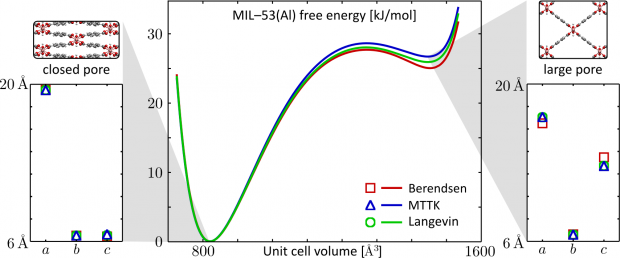Vibrational fingerprint of the absorption properties of UiO-type MOF materials
Abstract
The absorption properties of UiO-type metal–organic frameworks are computed using TD-DFT simulations on the organic linkers. A set of nine isoreticular structures, including the UiO-66 and UiO-67 materials and functionalized variants, are examined. The excitation energies from a static geometry optimization are compared with dynamic averages obtained from sampling the ground-state potential energy surface using molecular dynamics. The vibrational modes that impact the excitation energy are identified. This analysis is done using a recently proposed tool based on power spectra of the velocities and the excitation energies. The applied procedure allows including important factors influencing the absorption spectra, such as the periodic framework, linker variation and dynamical effects including harmonic and anharmonic nuclear motions. This methodology allows investigating in detail the vibrational fingerprint of the excitation energy of advanced materials such as MOFs and gives perspectives to tailor materials toward new light-based applications.
 Open Access version available at UGent repository
Open Access version available at UGent repository
